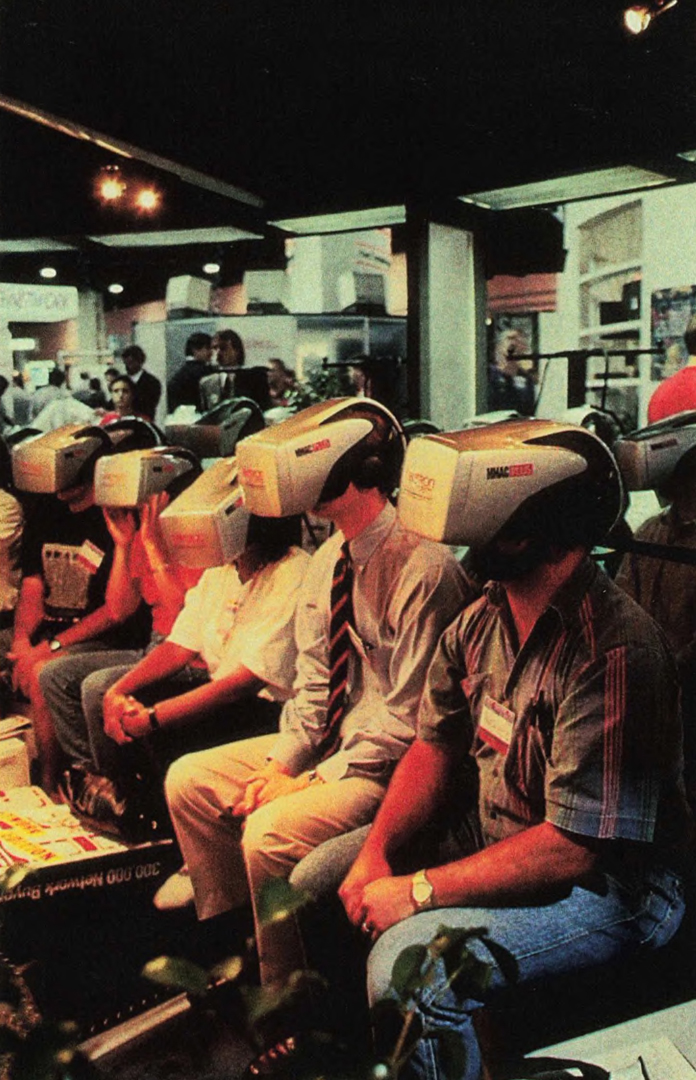“3D Virtual Theater” by Massulli
Conference:
- SIGGRAPH 1995
-
More from SIGGRAPH 1995:


Type(s):
Entry Number: 01
Title:
- 3D Virtual Theater
Program Title:
- Interactive Entertainment
Presenter(s):
Project Affiliation:
- StrayLight Corp.
Description:
3D Virtual Theater is a stereoscopic three-minute virtual thrill ride that offers the audience the feel of a wild simulation experience. The 3D sound system is directly linked to the vibration seat, so every participant is completely immersed in the journey. A high- resolution head-mounted display enhances the special effects of the surrounding 3D images flying off the screen. Several different experiences are available, including flythroughs of computer networks, psychedelic tunnels, and ski races down the Swiss Alps. Participants not only watch the show, they also become part of the adventure.
Background
StrayLight Corp. began four years ago with creation of PhotoVR, a PC-based software package. Soon afterward, the company moved into the location-based entertainment market with CyberTron, an immersive virtual reality experience based on a multi-ring gyroscopic platform. As the developer of all CyberTron games, StrayLight often customizes the VR software to accommodate special purposes and different themes.
The CyberTron allows an audience throughput of 10 to 20 participants per hour. 3D Virtual Theater was developed in response to StayLight’s customers’ demand for increased throughput. The first 3D Virtual Theater was built in May 1994 for CableTron Systems, where it achieved a throughput of over 300 participants per hour. The theater is designed modularly, so each installation can be expanded to handle thousands of people per hour. The success of StrayLight’s first installation proved that the virtual-theater concept is ready for high- traffic locations such as museums, science centers, and theme parks.
Since the first 3D Virtual Theater installation, StrayLight has enhanced the experience with 3D stereoscopic imagery and impact seats. The 3D system is directly linked to the vibration seats, so that every audience member is completely engrossed by the rumbles and roars of the virtual experience. Three-dimensional effects are generated with uniquely formatted visuals for each eye. Every frame is rendered twice, once for the left eye and again for the right eye, and then merged into a single image.
Fully interactive virtual reality theaters will be the next stage in the theater development process. Audiences will share the excitement of attending a theatrical experience in which they not only control the complete story line but become part of the whole adventure. Since the software can be easily updated, each theater can offer a large variety of virtual experiences.




